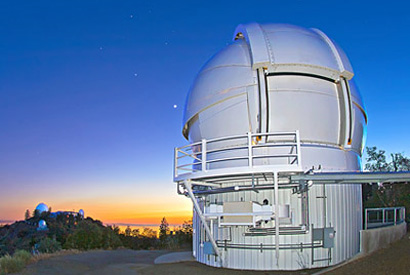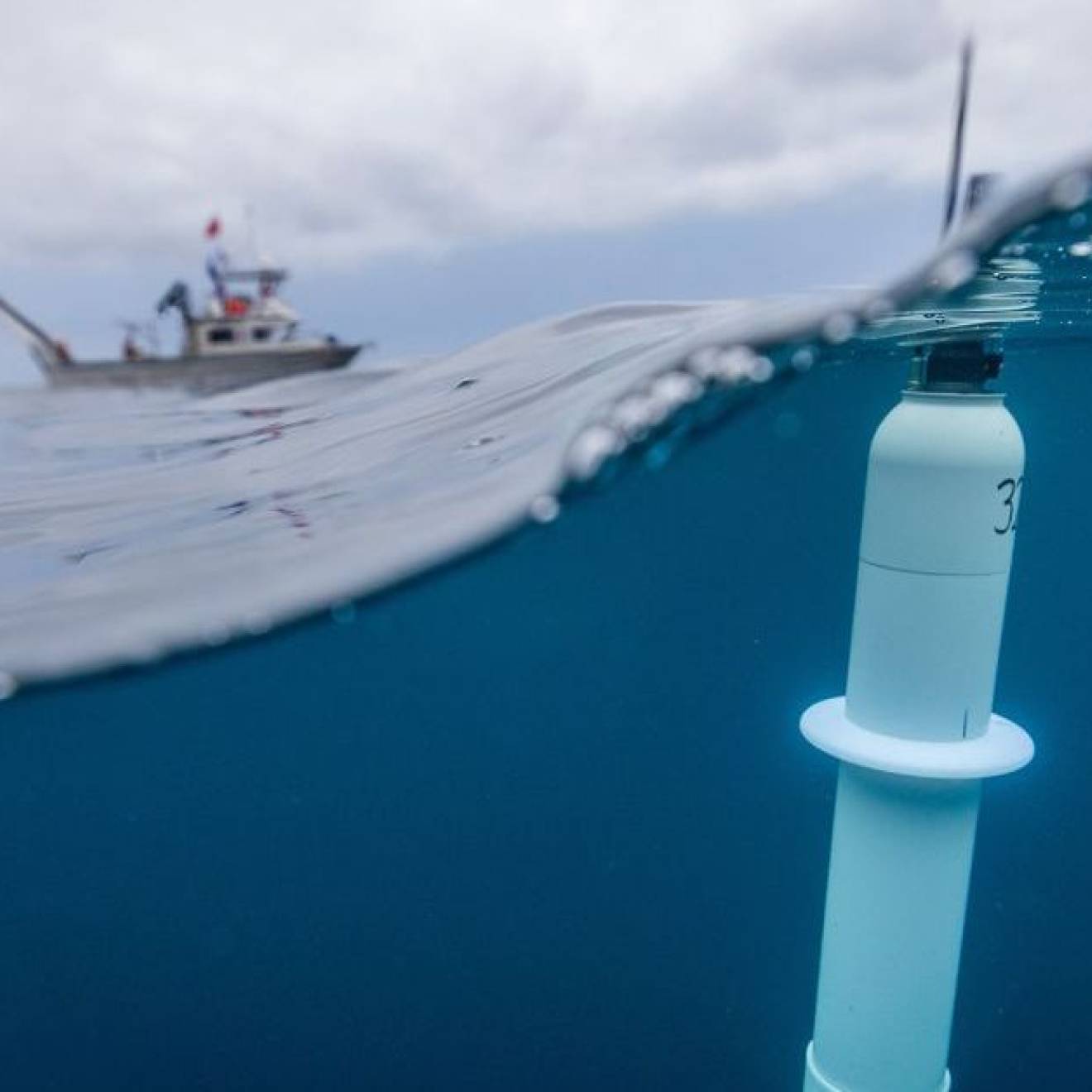Robert Sanders, UC Berkeley

The Breakthrough Prize Foundation and its founder, internet investor Yuri Milner, have signed a contract with the University of California, Berkeley, to lead a major escalation in the search for extraterrestrial intelligence, or SETI.
The foundation has committed $100 million over 10 years to UC Berkeley and other participating institutions for a project called Breakthrough Listen, the most comprehensive scientific SETI project yet.

Credit: UCO-Lick image
The Breakthrough Prize Foundation has already contracted with two of the world’s largest radio telescopes — the 100-meter Robert C. Byrd Green Bank Telescope in West Virginia and the 64-meter Parkes Telescope in New South Wales, Australia — to devote between 20 and 25 percent of their telescope time to searching for signals from other civilizations. The funding will also allow the Automated Planet Finder at the Lick Observatory near San Jose to search for optical laser signals from other planets.
The initiative was announced by Milner today (July 20) in London at The Royal Society, where he was joined by physicist Stephen Hawking, Astronomer Royal Martin Rees, SETI research pioneer Frank Drake, UC Berkeley astronomy professor Geoff Marcy and postdoctoral fellow Andrew Siemion, and foundation chairman Peter Worden.
For the Breakthrough Listen program, UC Berkeley will build high-speed digital electronics and high-bandwidth signal processing instruments to gather and analyze the radio and optical data collected by the telescopes, and will train the next generation of SETI scientists, said Dan Werthimer, one of the leaders of the effort.
“This is about five times the amount of money now spent worldwide on SETI, part of which will be used to purchase dedicated time on telescopes that previously we were lucky to get only a day or two per year,” said Werthimer, who heads the world’s longest-running SETI project, called SERENDIP, and is the scientific director of SETI@home, the popular crowd-sourced computing project.
Looking for planets that harbor life
Werthimer predicts that this dedicated telescope time will make SETI searches 50 times more sensitive than today and cover 10 times more sky, while new signal processors will be able to analyze five times the number of radio wavelengths 100 times faster.
“We learned from the NASA Kepler mission that our Milky Way Galaxy contains tens of billions of Earth-size planets at lukewarm temperatures, any of which might harbor life,” said Marcy, who will run the optical SETI project at Lick.
According to Worden, chairman of the Breakthrough Prize Foundation, UC Berkeley is renowned for its frontier digital signal processing technology, able to analyze billions of voltages per second coming from the backend of the radio telescopes.
The program will generate vast amounts of data, all of which will be open to the public. Over time this could constitute the largest amount of scientific data ever made available to the public, according to the foundation.
Werthimer, Marcy and Siemion, director of the Berkeley SETI Research Center, will be members of the initiative’s leadership team steering the project. They will be joined by Drake, the founding father of the SETI field, who is chairman emeritus of the SETI Institute in Mountain View, California, professor emeritus of astronomy and astrophysics at UC Santa Cruz and founding director of the National Astronomy and Ionosphere Center. Rees will oversee the advisory board of Breakthrough Listen.
Searching for a needle in a haystack
UC Berkeley’s SETI projects originally piggybacked on other astronomers’ telescope observations, which meant that the searches were often in random directions and limited frequencies. UC Berkeley’s SERENDIP program still captures radio waves from wherever the Arecibo Telescope in Puerto Rico points, breaks the data into segments, and asks its SETI@home volunteers to use spare time on their computers to process the signals to look for unnatural and potentially purposeful patterns.
Breakthrough Listen also will recruit the immense computing power of SETI@home’s 9 million volunteers to search radio data for signals from outside the solar system.
In addition, the Listen program will include a visible-light search using the Automated Planet Finder at Lick Observatory to detect laser beams pointing in our direction, and eavesdropping on interplanetary conversations in other solar systems.
With dedicated telescope time, researchers will be able to target specific stars around which exoplanets have been discovered by various planet hunting teams, most notably NASA’s Kepler mission. With broader sky coverage, Werthimer said, it will be possible to scan our entire galaxy of 200 billion stars, and even scan distant galaxies.
Siemion estimates that Breakthrough Listen telescopes could detect a radar signal the strength of that broadcast by an aircraft carrier if transmitted by any of the 1,000 nearest star systems. The project could also detect a 100-watt laser from our nearest stars.
“The sensitivity we get from having dedicated telescope time and better receivers is key if we are looking for artifacts of civilization, such as TV signals, which are incredibly weak,” Werthimer said. “Our search will be about a hundred times better than anything we’ve done before. This is beyond my wildest dreams.”
“The Breakthrough Listen initiative is our first opportunity to test the fundamental hypothesis behind modern radio SETI,” Siemion said. “We will be able to search the entire ‘quiet’ portion of the radio spectrum that is accessible to us from the surface of Earth, from a few hundred megahertz where our own TV stations transmit, to 10 gigahertz where we communicate with nearby spacecraft. This is a dramatic leap forward in our bandwidth, and will offer the best opportunity in history to detect advanced life beyond Earth.”
“Even if we don’t detect a signal from advanced life beyond Earth,” he added, “the detection limits obtained by the Breakthrough Listen searches will be the most rigorous ever achieved, and the technology developed will lay the groundwork for SETI searches for many decades to come.”
The Automated Planet Finder at Lick Observatory is operated by the University of California Observatories. The Green Bank Telescope is operated on behalf of the National Science Foundation by the National Radio Astronomy Observatory/Associated Universities Inc.

